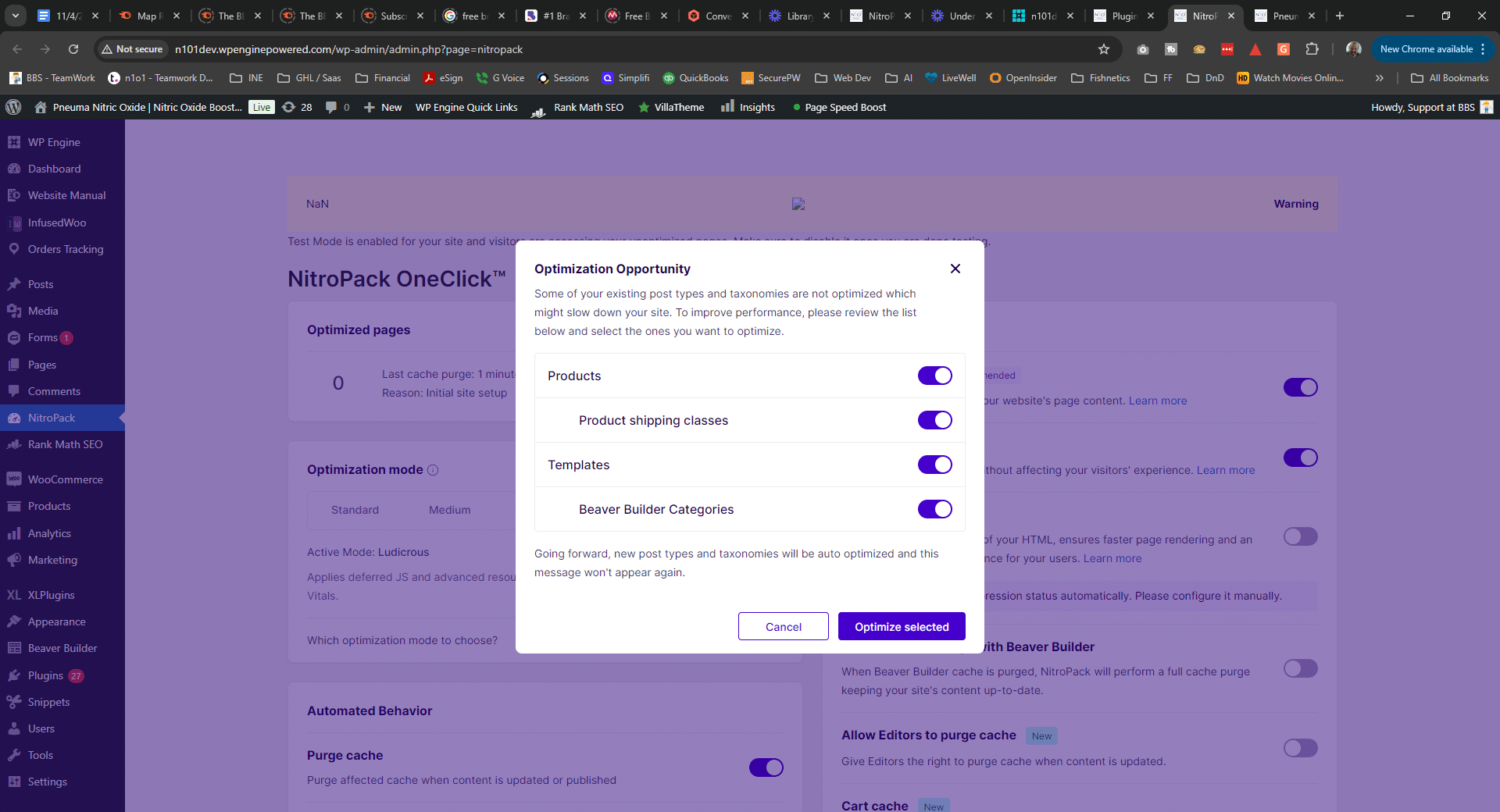Staying organized in your business is truthfully the number one key to success. I can guarantee you that if you do not have an organized editorial calendar and a solid editorial calender strategy that grows and changes with your business, you’re going to be your own worst enemy. It’s important to track promotions and product launches, meetings, etc. so you can visually see a high level overview of the direction of your business. Share this with all of your teams so that each indivudual sector knows what to expect. For example if you have a new product launch coming up, the marketing team will need to know when to create content before the launch and the sales team will need to manage their expectations for the launch as well. As a business owner, this helps you make data-driven decisions and keep everyone on track with your business goals. If you have any questions about how to power up your editorial content strategy or want our help, reach out to us at Prebuilt Sites or The BBS Agency. We’d love to help you out!
Many marketers use editorial calendars to plan their marketing campaigns and support their overall marketing strategy. They tend to think of their calendar as a set-it-and-forget-it kind of thing. But your editorial calendar could and should change even if your overall strategy does not change much over time.
For example, that new product feature you’re releasing next month might add a new workstream to the calendar as you create a set of content assets to support the launch. Or, the sales team’s quarterly report might influence your content repurposing To-Do list since you know what middle-of-funnel content aligns with their sales metrics.
When you have a more comprehensive view of how your editorial calendar can influence different areas of the company, you’ll have a better understanding of how to adjust it whenever you need to. As a result, you’ll collaborate more effectively with other teams, better align marketing with product changes and other high-level business updates, and make more relevant data-driven marketing decisions.
Here are six ways to make your editorial calendar strategy more robust for any industry:
1. GET MORE PEOPLE INVOLVED.
The first way to power up your editorial calendar is to get more subject matter experts (SMEs) involved in creating your content. The best ones are created and influenced by various perspectives, not just the view of the marketing department.
While your SMEs are not writers or marketers, they are experts on topics that interest your audience. Build relationships with the appropriate SMEs in your company that can offer specialized insight into the relevant topics you’ve got on your editorial calendar. People like product managers, operations staff, product creators like software developers, and company leaders make great “faces” of your company and can offer the in-depth insights your audience craves.
Your SMEs and other experts may be hesitant to participate in marketing because they’re not writers or marketers, so make it easy on them: offer to interview them and write up the draft. Then, all they have to do is review and approve the draft before publication.
2. USE THE CALENDAR TO MANAGE C-SUITE EXPECTATIONS.
The C-suite is always looking for the bottom line when it comes to marketing, as they want to see how marketing connects to the company’s financial reality. Nearly 80 percent of executives don’t trust their marketing team and believe that marketing misses opportunities to increase company revenues in measurable ways.
An editorial calendar can help you change that perception by demonstrating how it impacts the company’s strategic direction. Your calendar should outline the goals you’re trying to reach with it, such as shares, views, meetings booked, etc. By aligning the goals with the content assets, it’s easier for executives to see how marketing will affect overall business goals.
For example, the sign-up target number for a new product’s landing page can be one of the metrics tracked for the new product launch. It tangibly shows how marketing is supporting the new product launch and, ultimately, how it contributes to the company’s bottom line. Other ways your editorial calendar can set or meet executive expectations are:
- Align your editorial calendar to your company’s sales funnel, so it’s easy for executives to see how it supports sales.
- Measure your content’s effects with metrics and KPIs to summarize their performance for executives since they often want bottom line and summary-type metrics.
- Align the marketing metrics you’re tracking with overall marketing or business objectives to help executives more easily make the leap from the calendar to the company’s bottom line.
3. MAKE DATA-DRIVEN CONTENT DECISIONS.
Digital marketing moves fast today, so metrics and KPIs can help take some guesswork out of it and help marketing leaders make hard decisions. Instead of getting caught up in implementing new tactics or following trends, you can optimize marketing by discovering its true influence on revenues.
For example, Nextiva‘s growth marketing team aligns lead volumes with SEO metrics to determine where to adjust their content. If their lead volumes are too low, the marketing team adjusts their editorial calendar for specific keywords and phrases that increase inbound leads.
Here are some ways you can use metrics to influence your editorial calendar:
- Look at your customer lifetime value (CLV) and align content to your customers’ peak purchasing timeframes. Publish content that speaks to them at each stage of the customer lifespan, such as more educational content for new customers and more benefit-driven content for middle-to-longer term customers.
- Use marketing ROI (mROI) numbers to determine where to invest more money in content. Various touchpoints contribute to a deal or sale, such as blog posts, webinars, and events. Consider adding a value or weight to each touchpoint to determine its mROI to see how they’re working. Compare the MROI to your editorial calendar, eliminate the costly content with a low mROI, and add more of the high mROI content. BNN increased their mROI by converting their existing PDF-based marketing material into their digital marketing platform and adding more conversion projects to their editorial calendar in the future.
- Track the company’s customer acquisition cost (CAC) to see if you need to turn the content pipeline up or down. If your CLV to CAC ratio is too high (around 4:1), then you’re underinvesting and could maintain or reduce your calendar schedule a little. If it’s too low (under 3:1), the company’s not growing or might have negative growth. In that case, you need to publish content that’s more targeted to the various parts of the buyer’s journey and supports any sales campaigns.
4. DECIDE ON THE RIGHT BLEND OF CONTENT FOR YOUR BRAND.
Speaking of aligning your editorial calendar with the buyer’s journey and sales, knowing the right blend of content to publish is a challenge for most marketers. The content will only be effective if it strikes the right chord with its intended audience. Yes, readers need to know your company’s offerings and how the product is specifically geared to their needs. But if you publish it in the wrong format or at the wrong time for them, it’ll be wasted.
Your editorial calendar needs to have the right blend of content that matches your audience. As a marketer, you’ll need to know if your audience is part of the 73 percent of audiences that skim blog posts or if they’re part of the 58 percent that actively participate in virtual events and webinars. To find out what content blend your audience likes, you’ll need to measure your marketing efforts to determine how you’re doing. Here are a few ways to do that:
- Survey your customers to find out what content types they prefer.
- Measure your content downloads and views to see what types work best.
- Track the time of day your content is most consumed to see if that changes anything, especially when publishing on social media. Otherwise, your content could get lost in the shuffle.
- Ask customer-facing teams to track what questions they’re getting asked the most. Then, look at your content and see if you have anything that matches it. For example, if they’re always asking about new product features that have just been released, perhaps you could publish a blog series explaining a product feature and its benefits. That’ll help your customers get the answers they need while also decreasing the support team’s call volume.
5. ALIGN CONTENT WITH PRODUCT UPDATES OR PROMOTIONS.
While talking to the customer-facing teams, why not swing by the product teams to learn about upcoming new products or features? Not only should your editorial calendar contain content that addresses customers’ biggest needs and requirements, but it should align with the rest of your company’s sales campaigns, too. That way, you can support their efforts while continuing to meet your prospects’ expectations.
Ask sales to include marketing in the high-level planning so you can schedule supporting content on the same timeline. Subscribe to your company’s newsletter or other sales-related communications to see what type of content is sent and get a sense of the timing of any sales or other promotions. When you collaborate across teams, you’ll only make your editorial calendar better because it’ll support the entire business and boost the company’s bottom line.
Any marketer can create an editorial calendar, brainstorm ideas, and assign work to others. A savvy marketer knows how to use it to power up their marketing efforts, so it drives growth and revenues.
By using these five steps, marketers can make better data-driven decisions, publish the right content at the right time, and collaborate more often with colleagues to create meaningful content. Using an editorial calendar like this also increases marketing’s profile in the company and helps executives learn precisely how marketing contributes to the bottom line beyond just being a cost center.
Originally published on Contently Strategist.





